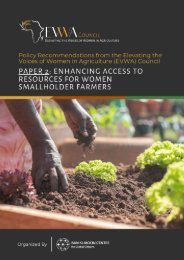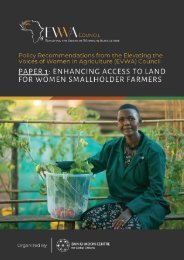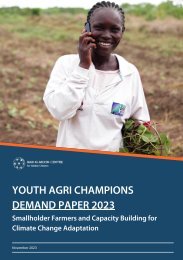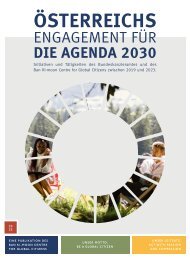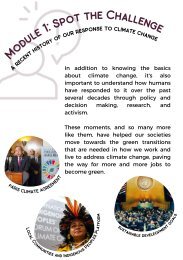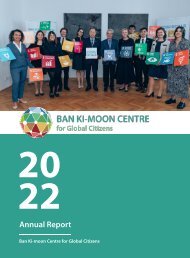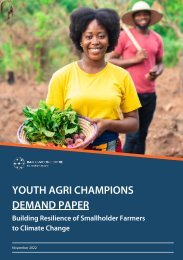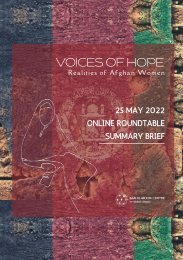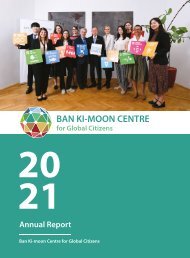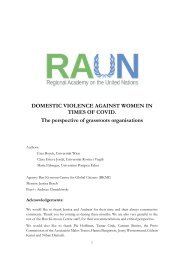RAUN_Global Citizenship Education in the European Union
The 2020 RAUN program focused on “Partnerships and Cooperation for the Future: 75 Years of UN Action” and was held virtually due to the Covid-19 pandemic. This year’s group took on the challenge to research the dimensions and differences of global citizenship education in the European Union. Three RAUN Scholars: Jülide Acsi (Germany), Andreas Chmielowski (Austria), and Helena Hornung (Austria) conducted a content analysis of current scientific literature, as well as qualitative interviews with experts and practitioners. The research resulted in a set of 114 qualitative indicators that characterize non-formal GCED programs targeted at children and youth. This comprehensive indicator set is filling the current data gap on GCED initiatives, making them pioneers in that field. Their policy recommendations furthermore disclose adequate responses on national and EU level when implementing non-formal GCED initiatives.
The 2020 RAUN program focused on “Partnerships and Cooperation for the Future: 75 Years of UN Action” and was held virtually due to the Covid-19 pandemic. This year’s group took on the challenge to research the dimensions and differences of global citizenship education in the European Union.
Three RAUN Scholars: Jülide Acsi (Germany), Andreas Chmielowski (Austria), and Helena Hornung (Austria) conducted a content analysis of current scientific literature, as well as qualitative interviews with experts and practitioners. The research resulted in a set of 114 qualitative indicators that characterize non-formal GCED programs targeted at children and youth. This comprehensive indicator set is filling the current data gap on GCED initiatives, making them pioneers in that field. Their policy recommendations furthermore disclose adequate responses on national and EU level when implementing non-formal GCED initiatives.
Create successful ePaper yourself
Turn your PDF publications into a flip-book with our unique Google optimized e-Paper software.
<strong>Global</strong> <strong>Citizenship</strong> <strong>Education</strong><br />
<strong>in</strong> <strong>the</strong> <strong>European</strong> <strong>Union</strong>:<br />
Dimensions and Differences<br />
Kirste<br />
Image Credit: Fridtjof
Authors:<br />
Jülide Asci, Universitat Autònoma de Barcelona<br />
Andreas Chmielowski, Wirtschaftsuniversität Wien<br />
Helena Hornung, Universität Wien<br />
Agency: Bank Ki-Moon Centre for <strong>Global</strong> Citizens (BKMC)<br />
Mentors: Jessica Besch, Monika Froehler<br />
Peer+ Counsel: Eva-Maria Holz<strong>in</strong>ger<br />
Acknowledgments<br />
Apart from our mentors at <strong>the</strong> BKMC and our Peer+ Counsel, we would like to thank Prof. Paul<br />
Downes (Dubl<strong>in</strong> City University) and Prof. Massimiliano Tarozzi (Università di Bologna) for <strong>the</strong>ir<br />
valuable feedback on our work. Fur<strong>the</strong>rmore, we would like to thank our <strong>in</strong>terview partners for<br />
<strong>the</strong>ir participation:<br />
Dr. Maria Barry, La Salete Coelho M.A., Margot Kapfer M.A., KIYO (Kids and Youth NGO<br />
Belgium), Michal<strong>in</strong>a Kułakowska B.A., Dr. Benjam<strong>in</strong> Mallon, Mag.a Téclaire Ngo-Tam, Mag.a<br />
Susanne Paschke, Patrick Thijs M.S.W., Prof. Lynette Shultz, Prof. Werner W<strong>in</strong>terste<strong>in</strong>er and Prof.<br />
Vanessa Andreotti.
Abstract<br />
<strong>Global</strong> <strong>Citizenship</strong> <strong>Education</strong> (GCED), which is covered by target 4.7 <strong>in</strong> <strong>the</strong> Susta<strong>in</strong>able<br />
Development Goal (SDG) framework of <strong>the</strong> United Nations (UN), is an educational fram<strong>in</strong>g<br />
paradigm aim<strong>in</strong>g at <strong>the</strong> activation of a global consciousness among learners. There exists a broad<br />
field of various, sometimes contradict<strong>in</strong>g, <strong>in</strong>terpretations among academics and practitioners on<br />
what knowledge, skills, behaviors, and attitudes this exactly entails. This makes any attempt to<br />
identify and assess GCED programs difficult. To tackle this challenge, this study conducts a<br />
content analysis on ten qualitative <strong>in</strong>terviews with experts and practitioners and on <strong>the</strong> current<br />
scientific literature. The aim is to construct a set of qualitative <strong>in</strong>dicators. The result is a set of 114<br />
<strong>in</strong>dicators <strong>in</strong> six categories which characterize non-formal GCED <strong>in</strong>itiatives targeted at youth and<br />
children. These <strong>in</strong>dicators can be used to identify GCED <strong>in</strong>itiatives and programs <strong>in</strong>dependent of<br />
whe<strong>the</strong>r <strong>the</strong>y label <strong>the</strong>mselves as such or not. This helps to disclose to policymakers which thirdsector<br />
<strong>in</strong>itiatives exist and which policy responses are adequate.
Contents<br />
I <strong>Global</strong> <strong>Citizenship</strong> (<strong>Education</strong>) - Why is it Needed? 1<br />
II A Theoretical Debate on <strong>Global</strong> <strong>Citizenship</strong> <strong>Education</strong> 2<br />
2.1. The state of <strong>the</strong> art 2<br />
2.2. Miss<strong>in</strong>g qualitative <strong>in</strong>dicators and research question 4<br />
III Bridg<strong>in</strong>g <strong>the</strong> Gap Between Theory and Practice 5<br />
3.1. Qualitative content analysis with literature and empirical data 5<br />
3.2. Literature-based qualitative content analysis 5<br />
3.3. Semi-structured <strong>in</strong>terviews 6<br />
3.4. Data preparation and qualitative content analysis 6<br />
IV Results 7<br />
Category I: Overarch<strong>in</strong>g motive 7<br />
Category II: Learn<strong>in</strong>g objectives 9<br />
Category III: Methods 11<br />
Category IV: Topics 11<br />
Category V: Program design and environment 12<br />
Category VI: Exclusion criteria for critical GCED 12<br />
V Discussion: A (self-)Critical View on <strong>Global</strong> <strong>Citizenship</strong><br />
<strong>Education</strong> 13<br />
VI Now what? 14<br />
VII Bibliography 15<br />
7.1 Bibliography for literature-based <strong>in</strong>dicators 17<br />
Appendix 20
List of Abbreviations<br />
APCEIU<br />
BKCM<br />
EU<br />
EFA<br />
GAML<br />
GC<br />
GCED<br />
GEFI<br />
HIV<br />
KIYO<br />
OECD<br />
SDG<br />
SFYOUTH<br />
UIS<br />
UN<br />
UNESCO<br />
Asia-Pacific Centre of <strong>Education</strong> for International Understand<strong>in</strong>g<br />
Ban Ki-Moon Centre for <strong>Global</strong> Citizens<br />
<strong>European</strong> <strong>Union</strong><br />
<strong>European</strong> Alpbach Forum<br />
<strong>Global</strong> Alliance for Monitor<strong>in</strong>g Learn<strong>in</strong>g<br />
<strong>Global</strong> <strong>Citizenship</strong><br />
<strong>Global</strong> <strong>Citizenship</strong> <strong>Education</strong><br />
<strong>Global</strong> <strong>Education</strong> First Initiative<br />
Human Immunodeficiency Virus<br />
Kids and Youth (NGO)<br />
Organisation for Economic Co-operation and Development<br />
Susta<strong>in</strong>able Development Goal<br />
Schools for Future Youth<br />
UNESCO Institute for Statistics<br />
United Nations<br />
United Nations <strong>Education</strong>al, Scientific and Cultural Organization
I <strong>Global</strong> <strong>Citizenship</strong> (<strong>Education</strong>) - Why is it Needed?<br />
“If you believe you’re a citizen of <strong>the</strong> world, you’re a citizen of nowhere. You don’t understand what <strong>the</strong> very word<br />
‘citizenship’ means.”<br />
This statement was declared by Theresa May <strong>in</strong> her clos<strong>in</strong>g speech to <strong>the</strong> Conservative Party<br />
Conference <strong>in</strong> October 2016 (Bearak, 2016). Her words triggered a wave of discussions across <strong>the</strong><br />
United K<strong>in</strong>gdom as well as many <strong>European</strong> countries and added to what is already a burn<strong>in</strong>g<br />
question <strong>in</strong> educational science: What k<strong>in</strong>d of citizenship do we need today?<br />
Put differently: Is <strong>the</strong> mean<strong>in</strong>g of citizenship, orig<strong>in</strong>ally conceptualized as “<strong>the</strong> legal right to belong<br />
to a particular country” (Oxford learner’s dictionary), still enough to capture human identities <strong>in</strong><br />
<strong>the</strong> 21st century? Should humans’ rights and responsibilities stay bound to <strong>the</strong> people and <strong>the</strong> land<br />
to which <strong>the</strong>y legally belong? Or is <strong>the</strong>re a need to amplify <strong>the</strong> mean<strong>in</strong>g of citizenship? After all,<br />
we live <strong>in</strong> a world <strong>in</strong> which political, social, and economic relations and <strong>the</strong>ir consequences traverse<br />
cont<strong>in</strong>ents with an unprecedented scope. How can we conceptualize citizenship which <strong>in</strong>cludes all<br />
<strong>the</strong>se extended relations and recognizes every human be<strong>in</strong>g equally?<br />
One way to capture a new concept of citizenship was brought up by educational scientists: <strong>Global</strong><br />
<strong>Citizenship</strong>. First efforts <strong>in</strong> this direction, mostly <strong>in</strong> <strong>the</strong> <strong>European</strong> and North American context,<br />
have led to pedagogies labeled as <strong>in</strong>tercultural learn<strong>in</strong>g, global education, cosmopolitan education,<br />
peace education, or civic education (W<strong>in</strong>terste<strong>in</strong>er et al., 2015: 3) While all of <strong>the</strong>se approaches<br />
cover important aspects of globalized human relations, it was <strong>the</strong> idea of <strong>Global</strong> <strong>Citizenship</strong><br />
(<strong>Education</strong>) which has ga<strong>in</strong>ed momentum <strong>in</strong> <strong>the</strong> past decade - at least so <strong>in</strong> parts of Europe, <strong>in</strong><br />
Canada, and <strong>in</strong> <strong>the</strong> Asia-Pacific region through <strong>the</strong> efforts of <strong>the</strong> Asia-Pacific Centre of <strong>Education</strong><br />
for International Understand<strong>in</strong>g (APCEIU).<br />
<strong>Global</strong> <strong>Citizenship</strong> <strong>Education</strong> (GCED) builds on <strong>the</strong> concepts mentioned above and comb<strong>in</strong>es<br />
important components <strong>in</strong>to a more encompass<strong>in</strong>g idea. It is <strong>the</strong>refore not entirely new but<br />
constitutes “an orig<strong>in</strong>al, necessary and forward-look<strong>in</strong>g mental framework, which seems to be <strong>in</strong>dispensable to<br />
education <strong>in</strong> times of globalization and a global society” accord<strong>in</strong>g to W<strong>in</strong>terste<strong>in</strong>er (2015: 5).<br />
Also, supranational <strong>in</strong>stitutions such as <strong>the</strong> United Nations (UN) have been conv<strong>in</strong>ced by <strong>the</strong> idea<br />
and adopted it <strong>in</strong>to <strong>the</strong> realm of development with <strong>the</strong> launch of <strong>the</strong> UN Secretary-General’s<br />
<strong>Global</strong> <strong>Education</strong> First Initiative (GEFI) <strong>in</strong> 2012. It identified “[to] foster global citizenship” as<br />
one of its three priority areas of work, along with access to and quality of education (Auh and Sim<br />
2018). In 2015, <strong>the</strong> UN <strong>the</strong>n officially adopted GCED <strong>in</strong>to <strong>the</strong> Susta<strong>in</strong>able Development Goals<br />
(SGDs) as a subgoal of SDG 4 on “Quality <strong>Education</strong>.” SDG 4 target 7 reads:<br />
“By 2030, ensure that all learners acquire <strong>the</strong> knowledge and skills needed to promote<br />
susta<strong>in</strong>able development, <strong>in</strong>clud<strong>in</strong>g, among o<strong>the</strong>rs, through education for susta<strong>in</strong>able<br />
development and susta<strong>in</strong>able lifestyles, human rights, gender equality, promotion of a culture of peace and non-<br />
1
violence, global citizenship, and appreciation of cultural diversity and of culture’s contribution to susta<strong>in</strong>able<br />
development.” [emphasis added] (United Nations General Assembly, A/RES/70/1, p. 17)<br />
The <strong>in</strong>tegration of GCED <strong>in</strong>to <strong>the</strong> SDGs is doubtlessly a big step towards <strong>in</strong>creas<strong>in</strong>g <strong>the</strong> visibility<br />
of both, <strong>the</strong> need for change <strong>in</strong> education and <strong>the</strong> need for a new citizenship concept. However,<br />
one fundamental question needs yet to be answered: What is <strong>Global</strong> <strong>Citizenship</strong>? What does it<br />
entail for a human to be a global citizen?<br />
UNESCO underl<strong>in</strong>es that<br />
“[a] common understand<strong>in</strong>g is that it is a sense of belong<strong>in</strong>g to a broader community, beyond national boundaries,<br />
that emphasizes our common humanity and draws on <strong>the</strong> <strong>in</strong>terconnectedness between <strong>the</strong> local and <strong>the</strong> global, <strong>the</strong><br />
national and <strong>the</strong> <strong>in</strong>ternational” (UNESCO, 2015a: 1).<br />
Ban Ki-Moon, a strong defender of <strong>the</strong> concept and co-founder of <strong>the</strong> Ban Ki-Moon Centre for<br />
<strong>Global</strong> Citizens, describes global citizens as people who look beyond <strong>the</strong>ir own national boundaries<br />
and th<strong>in</strong>k about what <strong>the</strong>y can do for o<strong>the</strong>rs. For him, it is an important concept for “any <strong>in</strong>dividual<br />
but particularly for political and bus<strong>in</strong>ess leaders to have a far-reach<strong>in</strong>g global vision with a compassionate<br />
leadership.” 1<br />
Both statements reflect strong ideas about <strong>the</strong> need to enlarge <strong>the</strong> human vision and feel<strong>in</strong>gs<br />
towards <strong>the</strong> world as a whole. And while <strong>the</strong> narrowest mean<strong>in</strong>g of it will certa<strong>in</strong>ly always depend<br />
on every human’s <strong>in</strong>dividual life experience <strong>in</strong> <strong>the</strong> world, we, <strong>the</strong> authors of this study, believe that<br />
<strong>the</strong>re must exist some connect<strong>in</strong>g dots which characterize a global citizen. Fur<strong>the</strong>rmore, we cannot<br />
turn away from ano<strong>the</strong>r, equally crucial question: How would education need to look like <strong>in</strong> order<br />
to educate people to become global citizens? As will be shown fur<strong>the</strong>r below, <strong>the</strong> debate is<br />
characterized by different paradigms, concepts, and categories but also by a lack of concrete<br />
<strong>in</strong>dicators which would allow for a tangible identification of both: global citizenship and its<br />
education.<br />
II A Theoretical Debate on <strong>Global</strong> <strong>Citizenship</strong> <strong>Education</strong><br />
2.1. The state of <strong>the</strong> art<br />
Besides provid<strong>in</strong>g an overarch<strong>in</strong>g def<strong>in</strong>ition, UNESCO made promis<strong>in</strong>g first steps towards<br />
captur<strong>in</strong>g some more specific components of GCED. It def<strong>in</strong>es it fur<strong>the</strong>r as embrac<strong>in</strong>g a<br />
transdiscipl<strong>in</strong>ary learn<strong>in</strong>g approach for children, youth, and adults alike, both <strong>in</strong> <strong>the</strong> curricular and<br />
extracurricular context (UNESCO 2014). It aims at facilitat<strong>in</strong>g <strong>the</strong> acquisition of skills, values,<br />
attitudes, and behaviors to “empower learners to assume active roles to face and resolve global challenges and to<br />
become proactive contributors to a more peaceful, tolerant, <strong>in</strong>clusive and secure world” (UNESCO-GAML 2017:<br />
3). It <strong>in</strong>volves <strong>the</strong> follow<strong>in</strong>g three doma<strong>in</strong>s of learn<strong>in</strong>g: <strong>the</strong> cognitive (knowledge, critical literacy),<br />
1 Ban Ki Moon’s statement at <strong>the</strong> <strong>European</strong> Forum Alpbach (EFA) August 2019. Retrieved from:<br />
https://www.youtube.com/watch?v=8NnODxtP4MA [30.11.2020]<br />
2
<strong>the</strong> socio-emotional (sense of belong<strong>in</strong>g to and responsibility for a common humanity), as well as<br />
<strong>the</strong> behavioral (tak<strong>in</strong>g action locally and globally) doma<strong>in</strong>s (Hong-Quan 2019, UNESCO 2015b).<br />
While this gives a first concrete glimpse <strong>in</strong>to a possible breakdown of GCED components, a deeper<br />
look <strong>in</strong>to academic GCED literature opens a Pandora’s box of <strong>in</strong>terpretations, methods, and<br />
expected learn<strong>in</strong>g outcomes. A big part of authors has identified “types” of GCED. For example,<br />
Andreotti (2006) one of <strong>the</strong> academic pioneers <strong>in</strong> this field, dist<strong>in</strong>guishes between “soft”<br />
(humanitarian/moral) and “critical” (political/ethical) GCED. The former denotes a ra<strong>the</strong>r<br />
straightforward knowledge transfer about global <strong>in</strong>terconnectedness and <strong>the</strong> promotion of<br />
development, harmony, and tolerance. The latter refers to a critical confrontation with unequal<br />
power relations, oppos<strong>in</strong>g views, and implicit western assumptions.<br />
W<strong>in</strong>terste<strong>in</strong>er (2019) expands on Andreotti’s dual dist<strong>in</strong>ction and adds a third, “hard” perspective<br />
of GCED which prepares learners to compete <strong>in</strong> global labor markets with a focus on <strong>in</strong>dividual<br />
opportunities ra<strong>the</strong>r than tackl<strong>in</strong>g global <strong>in</strong>equalities and <strong>in</strong>justices. As a defender of <strong>the</strong> “critical”<br />
view, he fur<strong>the</strong>r sees <strong>the</strong> “soft” (liberal) approach as one that promotes a patroniz<strong>in</strong>g connection<br />
to <strong>the</strong> rest of <strong>the</strong> world with <strong>the</strong> mission to help “<strong>the</strong> poorer to develop” and to “adapt to <strong>the</strong> Western<br />
model” (W<strong>in</strong>terste<strong>in</strong>er, 2019: 18).<br />
Comparable dist<strong>in</strong>ctions can be found <strong>in</strong> o<strong>the</strong>r papers, e.g. <strong>in</strong> Pais and Costa (2020) (criticaldemocratic<br />
and neoliberal approaches), Pashby et al. (2020) (neoliberal, liberal and critical) or<br />
SFYOUTH (2014) (cosmopolitan, neoliberal and advocacy approaches).Veugelers (2011) identifies<br />
three different read<strong>in</strong>gs of global citizenship (GC): open GC (recognition of state <strong>in</strong>terdependence<br />
and differences <strong>in</strong> cultures, openness to new experiences), moral GC (open GC + appreciation of<br />
cultural diversity, read<strong>in</strong>ess to take responsibility for humanity and to <strong>in</strong>crease opportunities for<br />
everyone, all both on a local and global level) and social-political GC (moral GC + social and<br />
political relations, work<strong>in</strong>g towards equality <strong>in</strong> relations).<br />
Now, even with this <strong>in</strong>tensive engagement with GCED, a consensus has yet to be reached with<br />
regards to a universal agreement on what GCED should promote, how it should achieve its goals,<br />
and how its effectiveness can be usefully assessed. In o<strong>the</strong>r words: a set of suitable, workable and<br />
universally measurable <strong>in</strong>dicators for <strong>in</strong>dividual <strong>in</strong>itiatives is still miss<strong>in</strong>g. This is not surpris<strong>in</strong>g<br />
consider<strong>in</strong>g <strong>the</strong> broadness and complexity of <strong>the</strong> topic. However, it is more important than ever<br />
to f<strong>in</strong>d common ground for criteria, as SDG 4.7 is understood crucial to achiev<strong>in</strong>g <strong>the</strong> overall SDG<br />
agenda. Its target 7 has been hailed as “one of <strong>the</strong> most important targets <strong>in</strong> terms of l<strong>in</strong>kages with o<strong>the</strong>r<br />
SDGs” with GCED at its core (UNESCO-GAML, 2017: 2).<br />
Exist<strong>in</strong>g concepts of monitor<strong>in</strong>g SDG 4.7 operate on a ra<strong>the</strong>r aggregate scale: A global target<br />
<strong>in</strong>dicator 4.7.1 is currently under development (release of <strong>the</strong> first report<strong>in</strong>g round <strong>in</strong> 2021), def<strong>in</strong>ed<br />
as “[e]xtent to which (i) global citizenship education and (ii) education for susta<strong>in</strong>able development, <strong>in</strong>clud<strong>in</strong>g gender<br />
equality and human rights, are ma<strong>in</strong>streamed at all levels <strong>in</strong>: (a) national education policies, (b) curricula, (c) teacher<br />
education and (d) student assessment” (UNESCO-UIS 2020). O<strong>the</strong>r aggregate-level <strong>in</strong>dicators measure<br />
GCED with a <strong>the</strong>matic focus - for example, <strong>the</strong> percentage of schools offer<strong>in</strong>g HIV and sexuality<br />
education (4.7.2), or <strong>the</strong> extent to which human rights are taught (4.7.3). On top of that, Marron<br />
and Naughton (2019) draw attention to <strong>the</strong> fact that “no data at all, or even reference to <strong>the</strong> Target of 4.7,<br />
3
is <strong>in</strong>cluded <strong>in</strong> <strong>the</strong> SDG 4 Databook on <strong>Global</strong> <strong>Education</strong> Indicators.” Even <strong>in</strong> <strong>the</strong> 2017 Strategy Proposal<br />
for Measurement of Target <strong>Global</strong> Alliance for Monitor<strong>in</strong>g Learn<strong>in</strong>g (GAML), SDG 4.7 seems to<br />
be “lost <strong>in</strong> translation and its lack of significant l<strong>in</strong>kage to o<strong>the</strong>r Target <strong>in</strong>dicators has left it overlooked” (ibid:<br />
20).<br />
2.2. Miss<strong>in</strong>g qualitative <strong>in</strong>dicators and research question<br />
One reason for this lack of more detailed <strong>in</strong>dicators lies <strong>in</strong> <strong>the</strong> fact that GCED embraces various<br />
and multi-dimensional approaches. It is <strong>the</strong>refore very broad and complex, which makes it difficult<br />
to grasp and def<strong>in</strong>e. Correlated with <strong>the</strong> lack of a comprehensive def<strong>in</strong>ition is <strong>the</strong> lack of knowledge<br />
of who is actually provid<strong>in</strong>g GCED <strong>in</strong> <strong>the</strong> world. It is difficult to map and evaluate associated<br />
efforts and <strong>in</strong>itiatives, especially if not labeled as such. There is no comprehensive list of (especially<br />
non-formal) educational programs <strong>in</strong> <strong>the</strong> EU yet which would allow for a generation of criteria by<br />
implication. The good news is: The Asia-Pacific Centre of <strong>Education</strong> for International<br />
Understand<strong>in</strong>g (APCEIU) has recently put first efforts <strong>in</strong>to mapp<strong>in</strong>g programs on a global scale,<br />
e.g. by <strong>in</strong>vit<strong>in</strong>g educators and practitioners “to share <strong>the</strong>ir educational good practices and experiences to foster<br />
<strong>Global</strong> <strong>Citizenship</strong> <strong>Education</strong>” (APCEIU 2019). These are important steps which will make it possible<br />
to ga<strong>the</strong>r data on <strong>the</strong> different manifestations of GCED.<br />
The study at hand aims at develop<strong>in</strong>g a comprehensive set of qualitative <strong>in</strong>dicators for<br />
characteriz<strong>in</strong>g <strong>in</strong>dividual GCED <strong>in</strong>itiatives, thus support<strong>in</strong>g mapp<strong>in</strong>g efforts <strong>in</strong> this regard. For this<br />
purpose, we consulted <strong>the</strong> literature, experts, and practitioners <strong>in</strong> <strong>the</strong> field of GCED to identify<br />
<strong>the</strong> various dimensions of GCED practice with<strong>in</strong> <strong>the</strong> non-formal education sector, i.e. programs<br />
outside of national curricula. Our aim is to answer <strong>the</strong> follow<strong>in</strong>g research question:<br />
How can GCED <strong>in</strong> <strong>the</strong> <strong>European</strong> <strong>Union</strong> be def<strong>in</strong>ed <strong>in</strong> <strong>the</strong> format of qualitative <strong>in</strong>dicators to identify non-formal<br />
educational programs which are offer<strong>in</strong>g services provid<strong>in</strong>g and promot<strong>in</strong>g GC for children and youth?<br />
The focus on <strong>the</strong> <strong>European</strong> <strong>Union</strong> (EU) attempts to bear relevance for policy recommendations<br />
at this political level. For <strong>the</strong> purpose of scientific relevance, selected <strong>in</strong>itiatives were to cover<br />
different practices or approaches and represent different socio-cultural and political grounds.<br />
Fur<strong>the</strong>r, <strong>the</strong> focus was narrowed to <strong>in</strong>vestigate non-formal 2 GCED programs target<strong>in</strong>g children<br />
and youth. S<strong>in</strong>ce <strong>the</strong> formal school context is well structured and overseen by central <strong>in</strong>stitutions,<br />
<strong>the</strong> biggest gap for a GCED mapp<strong>in</strong>g was seen regard<strong>in</strong>g “civil society” <strong>in</strong>itiatives, which are ra<strong>the</strong>r<br />
scattered and heterogeneous <strong>in</strong> <strong>the</strong>ir characteristics. Fur<strong>the</strong>rmore, we perceive <strong>the</strong> education for<br />
children and young people as most relevant regard<strong>in</strong>g GCED.<br />
Our <strong>in</strong>dicators can be used to identify and map programs, organizations, and <strong>in</strong>itiatives which offer<br />
GCED <strong>in</strong> <strong>the</strong> third sector (i.e. civil society). This could help policymakers, who have an <strong>in</strong>terest <strong>in</strong><br />
advanc<strong>in</strong>g <strong>the</strong> idea of GC, to better assess what content such <strong>in</strong>itiatives focus on, which methods<br />
2 Non-formal education as structured but unaccredited learn<strong>in</strong>g outside <strong>the</strong> formal <strong>in</strong>stitutional context, but unlike<br />
<strong>in</strong>formal education not spontaneous and undirected towards learn<strong>in</strong>g outcomes (see for example OECD’s Recognition<br />
of Non-formal and Informal Learn<strong>in</strong>g).<br />
4
<strong>the</strong>y use, and which goals <strong>the</strong>y pursue. It could enable <strong>the</strong> detection of <strong>the</strong>matic bl<strong>in</strong>dspots and<br />
perceived priorities <strong>in</strong> society, thus lay<strong>in</strong>g <strong>the</strong> groundwork for adequate policy responses.<br />
III Bridg<strong>in</strong>g <strong>the</strong> Gap Between Theory and Practice<br />
3.1. Qualitative content analysis with literature and empirical data<br />
In this study, qualitative content analysis was applied to generate <strong>in</strong>dicators of GCED by extract<strong>in</strong>g<br />
detailed <strong>in</strong>formation from different data sources: literature and <strong>in</strong>terviews. Accord<strong>in</strong>g to Mayr<strong>in</strong>g<br />
(2016), qualitative content analysis is a systematic approach of scann<strong>in</strong>g data such as documents or<br />
<strong>in</strong>terview transcripts for concepts used <strong>in</strong> a certa<strong>in</strong> context. Its objective is to break down large<br />
texts <strong>in</strong>to segments which reflect <strong>the</strong> ma<strong>in</strong> statements regard<strong>in</strong>g <strong>the</strong> research question. By<br />
abstract<strong>in</strong>g mean<strong>in</strong>g from <strong>the</strong> flow of sentences to create content-related categories, it is possible<br />
to compare large amounts of texts from different sources, by check<strong>in</strong>g <strong>the</strong>se categories aga<strong>in</strong>st each<br />
o<strong>the</strong>r (Mayr<strong>in</strong>g, 2016: 114-115).<br />
The methodological approach of data-triangulation (Baur, 2019: 67) was fur<strong>the</strong>r used to tackle <strong>the</strong><br />
research question from different perspectives and <strong>in</strong>clude different types of data. The reviewed<br />
literature reflects <strong>the</strong> <strong>the</strong>oretical-conceptual side of GC(ED) while <strong>the</strong> ga<strong>the</strong>r<strong>in</strong>g of data through<br />
<strong>in</strong>terviews represents <strong>the</strong> empirical-practical side. With<strong>in</strong> <strong>the</strong> <strong>in</strong>terviews, a fur<strong>the</strong>r analytical<br />
dist<strong>in</strong>ction between “experts” and “practitioners” was made to grasp <strong>the</strong> mean<strong>in</strong>g of GC(ED) from<br />
statements of people primarily work<strong>in</strong>g <strong>in</strong> <strong>the</strong> field as <strong>the</strong>orists, researchers, or policy advisors<br />
(experts) and on <strong>the</strong> o<strong>the</strong>r hand, practitioners directly engaged <strong>in</strong> transferr<strong>in</strong>g knowledge, skills and<br />
a sense of GC amongst learners. 3<br />
3.2. Literature-based qualitative content analysis<br />
The first step <strong>in</strong> this study was an exploratory literature review of 19 documents 4 to understand <strong>the</strong><br />
most common and controversial def<strong>in</strong>itions of GC and GCED (phase 1 <strong>in</strong> Fig. 1). From here, two<br />
ma<strong>in</strong> <strong>the</strong>oretical f<strong>in</strong>d<strong>in</strong>gs were used for fur<strong>the</strong>r analysis: <strong>the</strong> dist<strong>in</strong>ction <strong>in</strong>to three learn<strong>in</strong>g doma<strong>in</strong>s<br />
as elaborated above (cognitive, socio-emotional, behavioral) and <strong>the</strong> dist<strong>in</strong>ction between critical<br />
and uncritical forms of GC. Based on <strong>the</strong>se <strong>the</strong>oretical assumptions a prelim<strong>in</strong>ary set of <strong>in</strong>dicators<br />
was created.<br />
3 In fact, <strong>the</strong> l<strong>in</strong>e between experts and practitioners is blurry and was ma<strong>in</strong>ly established to bridge <strong>the</strong> gap between<br />
<strong>the</strong> more abstract realm of GC and <strong>the</strong> applied realm of GCED. Some of our <strong>in</strong>terview partners are directly<br />
<strong>in</strong>volved both <strong>in</strong> research and <strong>the</strong> conveyance of GCED. In any case, we consider practitioners to be experts <strong>in</strong><br />
<strong>the</strong>ir field as much as any o<strong>the</strong>r person committed to <strong>the</strong> cause of GC professionally.<br />
4 The academic read<strong>in</strong>gs and work<strong>in</strong>g papers for this analysis are published ma<strong>in</strong>ly by <strong>in</strong>stitutions from <strong>the</strong> <strong>European</strong><br />
and North-American world region, based on <strong>the</strong> UNESCO geoscheme of world regions (Regions and Countries |<br />
United Nations <strong>Education</strong>al, Scientific and Cultural Organization). This decision was made due to <strong>the</strong> relevance of <strong>the</strong><br />
overall research <strong>in</strong>terest to def<strong>in</strong>e GCED and its application <strong>in</strong> <strong>the</strong> <strong>European</strong> <strong>Union</strong>.<br />
5
Fig. 1: Process of develop<strong>in</strong>g <strong>the</strong> <strong>in</strong>dicators.<br />
3.3. Semi-structured <strong>in</strong>terviews<br />
In a parallel process, potential <strong>in</strong>terview partners were identified through <strong>in</strong>ternet-based research.<br />
The sampl<strong>in</strong>g of GCED-related <strong>in</strong>itiatives was based on <strong>the</strong>oretical considerations ra<strong>the</strong>r than on<br />
representative grounds. Besides consider<strong>in</strong>g programs explicitly framed as GCED <strong>in</strong>itiative, it was<br />
decided to take <strong>in</strong>to account <strong>in</strong>itiatives which did not dist<strong>in</strong>ctively frame <strong>the</strong>ir programs as GCED<br />
but seemed relevant due to <strong>the</strong>ir characteristics. The <strong>in</strong>coherent use of a “universal” GCED<br />
term<strong>in</strong>ology (e.g. “global learn<strong>in</strong>g”, “development education”) po<strong>in</strong>ts towards “unseen” but<br />
potentially relevant actors <strong>in</strong> this field, who simply use different terms to frame <strong>the</strong>ir o<strong>the</strong>rwise<br />
GCED-congruent practices (see Anderson and Bhattacharya 2017: 7).<br />
A semi-structured <strong>in</strong>terview guide helped to identify different experiences due to <strong>the</strong> formulation<br />
of open-ended questions. This allowed <strong>in</strong>terviewees to express <strong>the</strong>ir <strong>in</strong>dividual perspectives. The<br />
questions were <strong>in</strong>spired by <strong>the</strong> literature review and aimed at gett<strong>in</strong>g answers beyond <strong>the</strong> ra<strong>the</strong>r<br />
<strong>the</strong>oretical considerations from <strong>the</strong> academic literature and technical work<strong>in</strong>g papers. We, <strong>the</strong><br />
<strong>in</strong>terviewers, made sure to ma<strong>in</strong>ta<strong>in</strong> <strong>the</strong> focus of <strong>the</strong> <strong>in</strong>terviews on those experiences and op<strong>in</strong>ions<br />
which help to def<strong>in</strong>e GC(ED) <strong>in</strong> general as well as for <strong>the</strong> specific context of youth and children.<br />
A total of ten <strong>in</strong>terviews were conducted, four with practitioners, six with experts (phase 2 <strong>in</strong> Fig.<br />
1).<br />
3.4. Data preparation and qualitative content analysis<br />
After a content-focused transcription of all <strong>in</strong>terviews, an exploratory cod<strong>in</strong>g phase was used to<br />
create first categories from <strong>the</strong> data. Each <strong>in</strong>terview was analyzed on an <strong>in</strong>dividual basis by a<br />
member of our research team. This enabled us to extract <strong>in</strong>dicators separately and <strong>in</strong>dependently<br />
6
from <strong>the</strong> literature based <strong>in</strong>dicators. After <strong>the</strong>se <strong>in</strong>dividual analyses, <strong>the</strong> <strong>in</strong>dicators were compared<br />
and <strong>in</strong>terpreted <strong>in</strong> light of <strong>the</strong>oretical considerations. The category system developed <strong>in</strong> this jo<strong>in</strong>t<br />
effort was used for <strong>the</strong> qualitative content analysis of <strong>the</strong> rema<strong>in</strong><strong>in</strong>g <strong>in</strong>terviews. Only after this<br />
second systematic cod<strong>in</strong>g process (Mayr<strong>in</strong>g 2016: 114) <strong>the</strong> results from <strong>the</strong> <strong>in</strong>terviews were merged<br />
with <strong>the</strong> previous results from <strong>the</strong> literature (phase 3 <strong>in</strong> Fig. 1).<br />
The merg<strong>in</strong>g process was done <strong>in</strong> group work, cont<strong>in</strong>uously discuss<strong>in</strong>g possible <strong>in</strong>terpretations and<br />
different perspectives to relativize <strong>the</strong> positionality of <strong>the</strong> <strong>in</strong>dividual researchers (Baur 2019: 67).<br />
These discussions were also aimed at understand<strong>in</strong>g <strong>the</strong> contextual mean<strong>in</strong>gs of <strong>the</strong> <strong>in</strong>dicators <strong>in</strong>depth<br />
and creat<strong>in</strong>g def<strong>in</strong>itions as precise as possible.<br />
IV Results<br />
Based on this literature and <strong>in</strong>terview-based qualitative content analysis, five ma<strong>in</strong> categories were<br />
def<strong>in</strong>ed, describ<strong>in</strong>g (1) <strong>the</strong> overarch<strong>in</strong>g motives of organizations to offer GCED <strong>in</strong>itiatives, (2)<br />
learn<strong>in</strong>g objectives, (3) <strong>the</strong>ir methods, (4) topics and (5) <strong>the</strong> overall program design which<br />
determ<strong>in</strong>es <strong>the</strong> learn<strong>in</strong>g environment. These categories comprise a total of 100 <strong>in</strong>dicators (see Fig.<br />
2), which mark <strong>the</strong> basic dimensions <strong>in</strong> which <strong>in</strong>itiatives can differ from each o<strong>the</strong>r.<br />
Initiatives can be characterized by <strong>the</strong> way <strong>in</strong> which <strong>the</strong>y correspond to each of <strong>the</strong> <strong>in</strong>dicators. For<br />
example, a specific program could embrace <strong>the</strong> “critical analysis” dimension while disregard<strong>in</strong>g<br />
“management of emotions”. It is understandable that an <strong>in</strong>itiative cannot emphasize all listed<br />
dimensions at <strong>the</strong> same time <strong>in</strong> its work. In its entirety, <strong>the</strong> described set of <strong>in</strong>dicators spans a<br />
comprehensive space <strong>in</strong> which a large variety of comb<strong>in</strong>ations is possible. This allows for <strong>the</strong><br />
characterization of <strong>in</strong>itiatives accord<strong>in</strong>g to <strong>the</strong>ir <strong>in</strong>dividual approaches.<br />
The <strong>in</strong>dicators <strong>in</strong>cluded <strong>in</strong> <strong>the</strong> five categories above are of descriptive character. S<strong>in</strong>ce most of our<br />
<strong>in</strong>terview partners advocated a view on GCED which could be described as “critical” (follow<strong>in</strong>g<br />
<strong>the</strong> classification of W<strong>in</strong>terste<strong>in</strong>er (2019), see section 2.1), we were able to extract an additional set<br />
of 14 <strong>in</strong>dicators describ<strong>in</strong>g characteristics that critical GCED <strong>in</strong>itiatives would not exhibit. This<br />
sixth category of “exclusion criteria for critical GCED” is dist<strong>in</strong>ct from <strong>the</strong> o<strong>the</strong>rs due to its<br />
normative implications.<br />
4.1. Category I: Overarch<strong>in</strong>g motive<br />
This category describes <strong>the</strong> personal and organizational commitment to promot<strong>in</strong>g GC as a way of<br />
see<strong>in</strong>g and be<strong>in</strong>g <strong>in</strong> <strong>the</strong> world. It can entail philosophical, pedagogical, and socio-political<br />
considerations regard<strong>in</strong>g GCED as a way to prepare learners and teachers alike for <strong>the</strong> challenges<br />
7
Fig. 2: Indices by category after merg<strong>in</strong>g <strong>the</strong> results from <strong>the</strong> literature review and analysis of <strong>the</strong><br />
<strong>in</strong>terviews.<br />
8
of a globalized society. As with <strong>the</strong> o<strong>the</strong>r <strong>in</strong>dicators, it is likely that an <strong>in</strong>itiative is not driven by<br />
only one motive but ra<strong>the</strong>r a comb<strong>in</strong>ation of several.<br />
For KIYO, a Belgian NGO, GCED is used as an “empowerment” concept for children and youth<br />
between 10 and 25 years. They consider young people <strong>the</strong> agents of change, who will have to deal<br />
with <strong>the</strong> future outcomes of current challenges such as climate change. However, from <strong>the</strong>ir<br />
experiences, youth are often lack<strong>in</strong>g <strong>the</strong> skills and confidence to engage <strong>in</strong> political dialogues and<br />
social engagements actively, even if <strong>the</strong>y are given <strong>the</strong> opportunity to talk face to face to <strong>the</strong>ir local<br />
policy makers. Consequently, <strong>the</strong>re is a gap between <strong>the</strong> demands on <strong>the</strong> future generation of<br />
decision-makers and <strong>the</strong> lack of preparedness for this great responsibility. The underly<strong>in</strong>g belief is<br />
that social and structural change starts on <strong>the</strong> <strong>in</strong>dividual and local level with “[...]youth ga<strong>in</strong><strong>in</strong>g control<br />
over <strong>the</strong>ir lives, youth engag<strong>in</strong>g <strong>in</strong> <strong>the</strong>ir communities and youth hav<strong>in</strong>g <strong>the</strong>se skills and know<strong>in</strong>g how to use <strong>the</strong>m.<br />
[...] And all this, <strong>in</strong> order for youth to <strong>in</strong>itiate structural change at <strong>the</strong> personal, at <strong>the</strong> <strong>in</strong>dividual, but also at <strong>the</strong><br />
social level” (Interview KIYO).<br />
4.2. Category II: Learn<strong>in</strong>g objectives<br />
The learn<strong>in</strong>g objectives category embraces <strong>the</strong> identified skills, attitudes, knowledge, and behaviors<br />
that GCED <strong>in</strong>itiatives are aim<strong>in</strong>g to convey to <strong>the</strong>ir learners. They represent a manifestation of <strong>the</strong><br />
underly<strong>in</strong>g motives from category I as vary<strong>in</strong>g learn<strong>in</strong>g objectives will be pursued (depend<strong>in</strong>g on<br />
<strong>the</strong> motive). This category is divided <strong>in</strong>to <strong>the</strong> three learn<strong>in</strong>g doma<strong>in</strong>s: <strong>the</strong> cognitive, <strong>the</strong> socioemotional<br />
and <strong>the</strong> behavioral. This division represents an ideal-type allocation of <strong>in</strong>dicators; <strong>in</strong><br />
practice, we expect <strong>the</strong> dist<strong>in</strong>ctions between <strong>the</strong>se doma<strong>in</strong>s not to be as clear-cut. For example,<br />
behavioral objectives need to be grounded <strong>in</strong> <strong>the</strong> cognitive or socio-emotional doma<strong>in</strong>. This<br />
became apparent <strong>in</strong> <strong>the</strong> course of analyz<strong>in</strong>g <strong>the</strong> <strong>in</strong>terviews (and can be observed <strong>in</strong> <strong>the</strong> <strong>in</strong>terviewee<br />
quotes <strong>in</strong>cluded).<br />
4.2.1. Cognitive doma<strong>in</strong><br />
Learn<strong>in</strong>g objectives <strong>in</strong> <strong>the</strong> cognitive doma<strong>in</strong> aim at convey<strong>in</strong>g knowledge about specific topics (see<br />
category V), analytical skills, life and technical skills, and <strong>the</strong> ability to critically reflect social<br />
relations. Several <strong>in</strong>terviewees underl<strong>in</strong>ed how <strong>the</strong> awareness and <strong>the</strong> knowledge of certa<strong>in</strong> issues<br />
is a crucial prerequisite for <strong>the</strong> o<strong>the</strong>r doma<strong>in</strong>s.<br />
For example, KIYO stated that <strong>the</strong>y “[...] th<strong>in</strong>k it's really key, be<strong>in</strong>g able to ask <strong>the</strong> right questions, be<strong>in</strong>g<br />
able to analyze <strong>in</strong>formation and use it to make susta<strong>in</strong>able decisions. [...] So, critical consciousness is someth<strong>in</strong>g we<br />
feel, we really th<strong>in</strong>k that it's a basic th<strong>in</strong>g. If you are an active global citizen or active agent of change.” However,<br />
Mov<strong>in</strong>g Cultures, ano<strong>the</strong>r Belgian NGO, diverted from this notion when say<strong>in</strong>g that “[w]orld<br />
citizenship is not an issue of knowledge, it is a way of conscience, of be<strong>in</strong>g, of presence, of see<strong>in</strong>g yourself <strong>in</strong> relationship,<br />
too” (Interview Mov<strong>in</strong>g Cultures).<br />
From this, we conclude that, while <strong>the</strong> cognitive dimension of GCED is undoubtedly an important<br />
aspect, it is at least not enough for an <strong>in</strong>itiative to concentrate on this doma<strong>in</strong> alone. The degree of<br />
emphasis on this doma<strong>in</strong> can vary strongly across <strong>in</strong>itiatives.<br />
9
The most significant <strong>in</strong>dicators to highlight from this doma<strong>in</strong> are “understand global<br />
connectedness” and “understand one’s own positionality”, which po<strong>in</strong>t right to <strong>the</strong> heart of GC.<br />
It is <strong>the</strong> awareness of how <strong>the</strong> local and global level are connected and what <strong>the</strong> learner’s own<br />
position is <strong>in</strong> this regard (<strong>the</strong> global reference): as a consumer <strong>in</strong> a globalized economy, as a citizen<br />
of <strong>the</strong> global north, as part of a global ecological system, etc. Nodd<strong>in</strong>gs (2005: 122) summarizes<br />
this as follows: “Possibly <strong>the</strong> most important recommendation, made by every writer <strong>in</strong> some form, is to recognize<br />
<strong>the</strong> power of <strong>the</strong> local <strong>in</strong> build<strong>in</strong>g a global perspective. [...] When <strong>the</strong>y learn to study and care for <strong>the</strong>ir own backyards<br />
and neighborhoods, <strong>the</strong>y are prepar<strong>in</strong>g to study global ecology.”<br />
O<strong>the</strong>r <strong>in</strong>dicators are more dependent on <strong>the</strong> <strong>in</strong>itiative’s <strong>the</strong>matic and paradigmatic focus. For<br />
example, any critical GCED <strong>in</strong>itiative will likely put much emphasis on <strong>the</strong> understand<strong>in</strong>g of<br />
structural conditions, power relations, and social constructions. An <strong>in</strong>itiative concentrat<strong>in</strong>g on<br />
climate justice would stress <strong>the</strong> “ecological consciousness” dimension, whereas a program focused<br />
on combat<strong>in</strong>g political <strong>in</strong>justice would primarily aim to convey “political th<strong>in</strong>k<strong>in</strong>g” and “media<br />
literacy.”<br />
4.2.2. Socio-emotional doma<strong>in</strong><br />
The socio-emotional learn<strong>in</strong>g doma<strong>in</strong> of GCED covers <strong>the</strong> transformation of feel<strong>in</strong>gs and attitudes<br />
towards global topics. Many of our <strong>in</strong>terviewees expressed that convey<strong>in</strong>g knowledge alone<br />
(cognitive doma<strong>in</strong>) does not automatically translate <strong>in</strong>to action (behavioral doma<strong>in</strong>).<br />
As Südw<strong>in</strong>d, an Austrian NGO, stated: “But we are still challenged by <strong>the</strong> fact that know<strong>in</strong>g someth<strong>in</strong>g will<br />
not [lead] to <strong>the</strong> actions, that is why global learn<strong>in</strong>g is also emphasiz<strong>in</strong>g <strong>the</strong> empathy part to get up and act. When<br />
you believe someth<strong>in</strong>g can change <strong>the</strong> world, maybe you can stand up and do it” (Interview Südw<strong>in</strong>d). The socioemotional<br />
doma<strong>in</strong> fills this gap between knowledge and action by creat<strong>in</strong>g “[...] a sense of belong<strong>in</strong>g to<br />
a common humanity, shar<strong>in</strong>g values and responsibilities, empathy, solidarity and respect for differences and diversity”<br />
(UNESCO 2015b).<br />
A large body of GCED <strong>in</strong>itiatives would easily emphasize all (or at least most) of <strong>the</strong> socioemotional<br />
<strong>in</strong>dicators with high priority. This is expla<strong>in</strong>ed by <strong>the</strong> fact that certa<strong>in</strong> characteristics are<br />
at <strong>the</strong> basis of almost any GCED <strong>in</strong>terpretation: solidarity, empathy, respect, <strong>in</strong>tr<strong>in</strong>sic motivation,<br />
and confidence are a set of attitudes that are important for any <strong>in</strong>itiative, whe<strong>the</strong>r it is critical or<br />
driven by e.g. humanitarian values.<br />
4.2.3. Behavioral doma<strong>in</strong><br />
This sub-category <strong>in</strong>cludes <strong>in</strong>dicators describ<strong>in</strong>g <strong>the</strong> actions <strong>in</strong>tended to be taken by <strong>the</strong> learners as<br />
a result of participat<strong>in</strong>g <strong>in</strong> a GCED program. UNESCO (2015b) summarizes this doma<strong>in</strong> as “[t]o<br />
act effectively and responsibly at local, national and global levels for a more peaceful and susta<strong>in</strong>able world”.<br />
In <strong>the</strong> analysis of <strong>the</strong> <strong>in</strong>terviews, we found that this doma<strong>in</strong> primarily comprises aspects of civic<br />
and political action. Südw<strong>in</strong>d po<strong>in</strong>ted out that participants of <strong>in</strong>-service teacher tra<strong>in</strong><strong>in</strong>g tend to<br />
”[...] get more <strong>the</strong> po<strong>in</strong>t of global education when you raise <strong>the</strong> term of GCED. Because, <strong>the</strong> citizenship part of<br />
political education, for global citizens, is more emphasized <strong>in</strong> this term than <strong>in</strong> global learn<strong>in</strong>g.” It is thus central<br />
to <strong>the</strong> general concept of GCED as it marks <strong>the</strong> strik<strong>in</strong>g difference to o<strong>the</strong>r forms of education of<br />
global topics.<br />
10
The <strong>in</strong>dicators <strong>in</strong> this third doma<strong>in</strong> describe capacities and propensities to behave <strong>in</strong> a “GC way”.<br />
Depend<strong>in</strong>g on <strong>the</strong> underly<strong>in</strong>g motive and GCED <strong>in</strong>terpretations, this can mean, e.g. that learners<br />
should raise awareness for GC-related topics, develop a sensitivity for vulnerable groups, or engage<br />
politically <strong>in</strong> <strong>the</strong>ir communities to <strong>in</strong>crease opportunities for everyone. Some of <strong>the</strong>se <strong>in</strong>dicators<br />
are prerequisites to o<strong>the</strong>rs. Political action, for example, requires sound communication and<br />
leadership skills. The development of <strong>the</strong>se is thus also a possible behavioral objective of a GCED<br />
<strong>in</strong>itiative. Also, some <strong>in</strong>dicators refer to <strong>the</strong> development of <strong>the</strong>se prerequisites on a personal level,<br />
such as <strong>the</strong> general “capacity to change” (e.g. thought patterns, habits). This refers to Vanessa<br />
Andreotti’s statement: “So, one of <strong>the</strong> th<strong>in</strong>gs that I th<strong>in</strong>k that needs to be [...] a ma<strong>in</strong> approach of GC is to<br />
expand our capacity. To […] face difficult th<strong>in</strong>gs. Without be<strong>in</strong>g overwhelmed or immobilized.”<br />
4.3. Category III: Methods<br />
One crucial teach<strong>in</strong>g pr<strong>in</strong>ciple of GCED is that learners have to go down <strong>the</strong>ir own path of<br />
personal development for GC. Interviewees emphasized <strong>the</strong> use of first-hand experiences through<br />
simulations, role-plays, social projects, <strong>in</strong>teractive teach<strong>in</strong>g methods (Socratic method, debates and<br />
discussions, etc.), reflection sessions, and meet<strong>in</strong>g people from different contexts. These methods<br />
aim at putt<strong>in</strong>g learners <strong>in</strong>to situations where <strong>the</strong>y develop a sense of global understand<strong>in</strong>g of<br />
<strong>the</strong>mselves and of o<strong>the</strong>r people: “I believe that experienc<strong>in</strong>g, see<strong>in</strong>g it directly, be<strong>in</strong>g face to face to someone who<br />
is <strong>in</strong> a worse position than <strong>the</strong>m, gives <strong>the</strong>m <strong>the</strong> opportunity to change someth<strong>in</strong>g <strong>in</strong> <strong>the</strong>ir worldview” (Interview<br />
Center for Systems Solutions).<br />
Br<strong>in</strong>g<strong>in</strong>g people toge<strong>the</strong>r who seem<strong>in</strong>gly have noth<strong>in</strong>g <strong>in</strong> common and lett<strong>in</strong>g <strong>the</strong>m exchange <strong>the</strong>ir<br />
differences and similarities is considered fruitful for <strong>the</strong> development of socio-emotional relations<br />
to o<strong>the</strong>rs, and hence, <strong>the</strong> active engagement for a common cause: “We want <strong>the</strong>m to become aware of<br />
<strong>the</strong>ir rights, to stand up for <strong>the</strong>ir rights and see that <strong>the</strong>se rights count for every child <strong>in</strong> <strong>the</strong> world. The universality<br />
part of it, and <strong>the</strong>n also with putt<strong>in</strong>g youth toge<strong>the</strong>r with o<strong>the</strong>r youth of different parts of <strong>the</strong> world <strong>the</strong>y see that <strong>the</strong>y<br />
have th<strong>in</strong>gs <strong>in</strong> common and that <strong>the</strong>y can foster global justice altoge<strong>the</strong>r [...]” (Interview KIYO).<br />
4.4. Category IV: Topics<br />
Susta<strong>in</strong>able development and human rights were emphasized as central <strong>the</strong>mes for GCED (<strong>in</strong> <strong>the</strong><br />
context of youth and children). The latter reflects a rights-based approach to GCED, which entails<br />
children’s rights and citizenship issues. It stresses <strong>the</strong> argument that every person <strong>in</strong> <strong>the</strong> world has<br />
<strong>the</strong> right to GC, which can be subsumed under <strong>the</strong> human rights charter (Interview Mov<strong>in</strong>g<br />
Cultures, Interview Südw<strong>in</strong>d). O<strong>the</strong>r <strong>the</strong>mes revolve around rais<strong>in</strong>g awareness for cultural and<br />
religious diversity, learn<strong>in</strong>g of and learn<strong>in</strong>g from one ano<strong>the</strong>r. “And so, <strong>the</strong> idea that diversity is a strength,<br />
and pluralism… <strong>the</strong> world is full of difference. And that actually is our strength on <strong>the</strong> planet” (Interview Shultz).<br />
Connect<strong>in</strong>g to this issue of ignorance and potential <strong>in</strong>tolerance to o<strong>the</strong>r worldviews and o<strong>the</strong>r ways<br />
of liv<strong>in</strong>g are issues of systemic discrim<strong>in</strong>ation (e.g. racism, gender) towards people due to<br />
differences from <strong>the</strong> dom<strong>in</strong>ant social group (Interview Shultz).<br />
11
In regard to learn<strong>in</strong>g from historical experience, knowledge of <strong>the</strong> past and a critical engagement<br />
with it can be established with topics such as global and colonial history. This shall help learners to<br />
realize that <strong>the</strong> world is built on past achievements and mistakes, and elaborate an understand<strong>in</strong>g<br />
of how to use this knowledge for <strong>the</strong> future (Interview Susan Smith). <strong>Global</strong>ization is ano<strong>the</strong>r<br />
lead<strong>in</strong>g topic which is about identify<strong>in</strong>g <strong>the</strong> effects a globalized social, economic, and political<br />
system have on society. All this toge<strong>the</strong>r shall help learners to critically reflect <strong>the</strong>ir role with<strong>in</strong><br />
<strong>the</strong>se systemic issues, “realiz<strong>in</strong>g that we are part of <strong>the</strong> problem” (Interview Coelho).<br />
4.5. Category V: Program design and environment<br />
The way <strong>the</strong> overall program is designed has essential effects on <strong>the</strong> learn<strong>in</strong>g environment and<br />
consequently on <strong>the</strong> potential of <strong>the</strong> <strong>in</strong>itiative to support a process of GC-development. The<br />
program structure, i.e. <strong>the</strong> duration of <strong>the</strong> program, <strong>the</strong> accessibility and target group, constitute<br />
<strong>the</strong> framework <strong>in</strong> which <strong>the</strong> learn<strong>in</strong>g processes take place. The <strong>in</strong>dicator “GCED-ma<strong>in</strong>stream<strong>in</strong>g”<br />
describes how <strong>the</strong> notion of GC permeates through every subject, activity and o<strong>the</strong>r learn<strong>in</strong>grelated<br />
matters. The common ground is that GCED is not “just ano<strong>the</strong>r subject” which can be<br />
taught <strong>in</strong> isolation to o<strong>the</strong>r topics, even less so without reference to <strong>the</strong> learners’ everyday lives.<br />
This holistic approach is central for GCED and works <strong>in</strong> three realms: (1) <strong>the</strong> learner, (2) <strong>the</strong><br />
educational structure, and (3) <strong>the</strong> educator.<br />
KIYO and Mov<strong>in</strong>g Cultures argue that this learn<strong>in</strong>g environment needs to be protected, mean<strong>in</strong>g<br />
that learners feel safe to articulate and develop <strong>the</strong>mselves. Fur<strong>the</strong>r, learners need to feel stimulated,<br />
for example, through open dialogues, discussions, and <strong>in</strong>teractive methods, enabl<strong>in</strong>g <strong>the</strong><br />
development of skills. These help <strong>the</strong>m to become active agents of change. And lastly, this<br />
environment needs to be participative (Interview KIYO). In Coelho’s words: “If you don't do work<strong>in</strong>g<br />
groups with your students, if you don't let <strong>the</strong>m decide some th<strong>in</strong>gs dur<strong>in</strong>g <strong>the</strong> process, don't expect <strong>the</strong>m to learn<br />
democracy. [...] because if <strong>the</strong>y don't vote anyth<strong>in</strong>g [...] <strong>the</strong>n democracy is ano<strong>the</strong>r concept that <strong>the</strong>y learn for an exam<br />
and <strong>the</strong>n <strong>the</strong>y forget it <strong>the</strong> next day. So we really have to be coherent as persons and as teachers <strong>in</strong> <strong>the</strong> methodology<br />
that we use” (Interview Coelho). This quote po<strong>in</strong>ts out that <strong>the</strong> educators <strong>the</strong>mselves have to be<br />
coherent. Coelho elaborates on that when she argues that GCED does not start and end at <strong>the</strong><br />
classroom door, but has to be a way of liv<strong>in</strong>g.<br />
4.6. Category VI: Exclusion criteria for critical GCED<br />
The previously described <strong>in</strong>dicators aim at identify<strong>in</strong>g a maximized possible set of GCED<br />
<strong>in</strong>itiatives. Some <strong>in</strong>terviewees po<strong>in</strong>ted out that an absolute dist<strong>in</strong>ction <strong>in</strong> GCED and non-GCED<br />
is not possible, as it is at <strong>the</strong> very core of GCED to be flexible and open to <strong>in</strong>terpretation. In her<br />
<strong>in</strong>terview, Vanessa Andreotti expressed that “[...] any attempt to def<strong>in</strong>e, what is, and what isn’t [GCED],<br />
might be very problematic, actually. Because who has <strong>the</strong> authority?” and later added: “[I]t is important to keep<br />
<strong>the</strong> discussion open [...] of what it is.” This openness of <strong>the</strong> term is not necessarily a disadvantage: “The<br />
complex and challeng<strong>in</strong>g nature of GCE[D] should be seen as a strength ra<strong>the</strong>r than as a weakness, as it obliges<br />
those engaged <strong>in</strong> GCE[D] to cont<strong>in</strong>uously re-exam<strong>in</strong>e perceptions, values, beliefs and world views” (UNESCO<br />
2014).<br />
12
Still, we asked what characteristics of an <strong>in</strong>itiative could be seen as problematic. S<strong>in</strong>ce <strong>the</strong> majority<br />
of our <strong>in</strong>terviewees represented (or preferred) “critical” <strong>in</strong>terpretations of GCED (see section 2.1),<br />
we extracted from <strong>the</strong>ir answers exclusion criteria for a critical understand<strong>in</strong>g of GCED. We<br />
comb<strong>in</strong>ed <strong>the</strong>ir answers with <strong>the</strong> f<strong>in</strong>d<strong>in</strong>gs from <strong>the</strong> literature review to formulate an additional set<br />
of 14 <strong>in</strong>dicators show<strong>in</strong>g characteristics of <strong>in</strong>itiatives that would not be considered critical GCED.<br />
For example, an <strong>in</strong>itiative which primarily fosters 21st-century skills to <strong>in</strong>crease <strong>the</strong> learners’<br />
employability <strong>in</strong> a competitive global labor market, without challeng<strong>in</strong>g exist<strong>in</strong>g power relations,<br />
would not qualify for critical GCED. Südw<strong>in</strong>d stated: “We do not do <strong>the</strong> educational work for gett<strong>in</strong>g <strong>the</strong><br />
students really fit for <strong>the</strong> 21st century and for globalization, to exploit more of <strong>the</strong> people and <strong>the</strong> planet, to [make]<br />
profits with all <strong>the</strong>se new skills, with all <strong>the</strong> competences you can ga<strong>in</strong>, but <strong>the</strong> competences that we want for people<br />
learn<strong>in</strong>g GCED or for <strong>the</strong> students or for everybody who learns <strong>in</strong> <strong>the</strong> way of GCED is on <strong>the</strong> personal level, of<br />
course.”<br />
O<strong>the</strong>r cases of non-GCED would be programs which have no primary <strong>in</strong>terest <strong>in</strong> challeng<strong>in</strong>g <strong>the</strong><br />
status quo, but are <strong>in</strong>stead driven by (or convey to <strong>the</strong>ir learners) a profit, self-stag<strong>in</strong>g, or warmglow<br />
5 motive. Likely, <strong>in</strong>itiatives driven by “only” humanitarian or paternalistic motivations, which<br />
tend to perceive global issues from an ethnocentric view, would not qualify as critical GCED ei<strong>the</strong>r.<br />
Margot Kapfer expressed <strong>in</strong> her <strong>in</strong>terview that, while she would not see humanitarian def<strong>in</strong>itions<br />
of GCED as bad per se, she f<strong>in</strong>ds it problematic to disregard <strong>the</strong> structural level completely.<br />
V Discussion: A (self-)Critical View on <strong>Global</strong> <strong>Citizenship</strong><br />
<strong>Education</strong><br />
This study shows <strong>the</strong> variety of concrete objectives, topics, and methods <strong>in</strong> which GCED <strong>in</strong>itiatives<br />
can engage. Our approach, based on <strong>in</strong>sights from GCED literature and practice, helps to better<br />
understand <strong>the</strong> conceptual def<strong>in</strong>itions of GC, which elsewhere tend to be vague.<br />
Never<strong>the</strong>less, <strong>the</strong>re are limits to this study. In retrospect, most of <strong>the</strong> consulted experts advocated<br />
a critical perception of GC (Andreotti, W<strong>in</strong>terste<strong>in</strong>er, Kapfer, Coelho). This critical approach was<br />
also seen <strong>in</strong> some of <strong>the</strong> <strong>in</strong>itiatives <strong>in</strong> vary<strong>in</strong>g degrees. Based on this f<strong>in</strong>d<strong>in</strong>g, <strong>the</strong> 6th set of <strong>in</strong>dicators<br />
was developed for evaluat<strong>in</strong>g an <strong>in</strong>itiative regard<strong>in</strong>g its “criticalness”.<br />
The exclusion criteria <strong>in</strong> category VI denote one possible way of look<strong>in</strong>g at GCED. In Baur’s words<br />
“each s<strong>in</strong>gle study is just a pebble <strong>in</strong> a mosaic” (Baur, 2019: 67). Similarly, every s<strong>in</strong>gle GCED <strong>in</strong>itiative<br />
can be seen as part of a greater effort to develop a shared sense of global belong<strong>in</strong>g.<br />
Concern<strong>in</strong>g perspectivity, <strong>the</strong> study is lack<strong>in</strong>g <strong>the</strong> perspective of <strong>in</strong>itiatives advocat<strong>in</strong>g for GC <strong>in</strong> its<br />
def<strong>in</strong>ition of global competitiveness and primarily personal benefits. So far, what we have learned<br />
is what <strong>the</strong> critical approach can deliver and what uncritical approaches are allegedly lack<strong>in</strong>g. Tak<strong>in</strong>g<br />
<strong>the</strong>se f<strong>in</strong>d<strong>in</strong>gs as granted without consult<strong>in</strong>g “<strong>the</strong> o<strong>the</strong>r side” would be biased aga<strong>in</strong>st uncritical<br />
ways of do<strong>in</strong>g GCED.<br />
5 “Warm-glow” summarizes any motivation to engage <strong>in</strong> any seem<strong>in</strong>gly altruistic activity only for <strong>the</strong> sake of <strong>the</strong> act,<br />
while disregard<strong>in</strong>g any outcome of it, see Andreoni (1990).<br />
13
Ano<strong>the</strong>r f<strong>in</strong>d<strong>in</strong>g from this study was that on a broader dimension, GCED is embedded <strong>in</strong> a<br />
contested political field. Notions of structural transformation and <strong>the</strong> deconstruction of national<br />
identities are controversial <strong>in</strong> nature. Some <strong>in</strong>terviewees argued that <strong>the</strong> “global” part of GCED<br />
was not well digested by very conservative and right-w<strong>in</strong>g camps. One organization stated that <strong>the</strong>y<br />
would identify <strong>the</strong>ir work as GCED practice, yet <strong>the</strong>y avoid this term<strong>in</strong>ology due to <strong>the</strong> resentment<br />
this “globalness” would evoke <strong>in</strong> some milieus. O<strong>the</strong>rs implied that <strong>the</strong> implementation of GCED<br />
was dependent on <strong>the</strong> political will of governments to promote a progressive agenda. This po<strong>in</strong>ts<br />
towards <strong>the</strong> dilemma of “preach<strong>in</strong>g to <strong>the</strong> converted” described by Coelho, mean<strong>in</strong>g that it is difficult<br />
to reach people with ideas of GC if <strong>the</strong>y are aga<strong>in</strong>st <strong>the</strong> very essence of it: connect<strong>in</strong>g people around<br />
<strong>the</strong> idea of a shared humanity ra<strong>the</strong>r than ma<strong>in</strong>ta<strong>in</strong><strong>in</strong>g differences and <strong>in</strong>equalities.<br />
VI Now what?<br />
Our study has laid one of <strong>the</strong> first build<strong>in</strong>g blocks for a bigger and <strong>in</strong>dispensable research that is<br />
yet to be carried out. If monitor<strong>in</strong>g and report<strong>in</strong>g on SDG 4.7 is to be concretized and comparably<br />
synchronized <strong>in</strong> <strong>the</strong> future, creat<strong>in</strong>g a common ground of <strong>in</strong>dicators of <strong>Global</strong> <strong>Citizenship</strong><br />
<strong>Education</strong> is paramount. As we have elaborated <strong>in</strong> our study, this is a challeng<strong>in</strong>g endeavor given<br />
<strong>the</strong> breadth and complexity of <strong>Global</strong> <strong>Citizenship</strong> (which, aga<strong>in</strong>, also represents its richness).<br />
In our study, we have looked at a handful of <strong>in</strong>itiatives <strong>in</strong> Europe and talked to ano<strong>the</strong>r handful of<br />
experts from ma<strong>in</strong>ly <strong>the</strong> “western” world. We have <strong>the</strong>reby been able to extract GCED <strong>in</strong>dicators<br />
through <strong>in</strong>-depth qualitative research comb<strong>in</strong><strong>in</strong>g <strong>in</strong>sights from <strong>the</strong>ory and practice. Our experience<br />
with this methodology has been overall positive as it allowed us to capture f<strong>in</strong>e nuances of<br />
mean<strong>in</strong>gs through an <strong>in</strong>tensive analysis of <strong>the</strong> <strong>in</strong>terviews and <strong>the</strong> literature, as well as <strong>the</strong> exchange<br />
of ideas through lengthy discussions. The eagerness of our <strong>in</strong>terview partners to participate <strong>in</strong> <strong>the</strong><br />
research has contributed substantially to <strong>the</strong> success of this project.<br />
The notion of this study as “build<strong>in</strong>g block”, however, implicates that <strong>the</strong>re are important steps to<br />
take <strong>in</strong> <strong>the</strong> future <strong>in</strong> order to push our results beyond <strong>the</strong> boundaries of its current applicability.<br />
We propose <strong>the</strong> follow<strong>in</strong>g recommendations for fur<strong>the</strong>r research:<br />
1. Increase <strong>the</strong> number of <strong>European</strong> <strong>in</strong>itiatives for <strong>in</strong>terviews to capture a wider variety<br />
of GCED manifestations <strong>in</strong> Europe. We are aware that Europe - and equally so <strong>the</strong> EU<br />
<strong>in</strong> <strong>the</strong> narrower sense - is very diverse as a world region <strong>in</strong> terms of cultural and historical<br />
backgrounds. This diversity needs to be captured through <strong>the</strong> <strong>in</strong>corporation of each<br />
country <strong>in</strong>to <strong>the</strong> sampl<strong>in</strong>g.<br />
2. Enlarge <strong>the</strong> research scope on a global scale. Through our own cultural and<br />
geographical backgrounds as researchers, we have logically so decided to <strong>in</strong>vestigate <strong>the</strong><br />
EU. It is crucial, however, to carry out this k<strong>in</strong>d of research <strong>in</strong> o<strong>the</strong>r world regions as well,<br />
such as South America, North America, Africa, <strong>the</strong> Middle East, Eurasia, South East Asia,<br />
Oceania, etc. For this, it would be crucial to collaborate with researchers from those regions<br />
as <strong>the</strong>y will contribute with valuable <strong>in</strong>sights to a global understand<strong>in</strong>g of GCED.<br />
14
3. Include more perspectives on GCED. In our study, we generated (<strong>in</strong>clusion and<br />
exclusion) <strong>in</strong>dicators which can be generalizable for a “critical” understand<strong>in</strong>g of GCED<br />
<strong>in</strong> Europe. As ano<strong>the</strong>r fur<strong>the</strong>r research step, we recommend to <strong>in</strong>clude voices from GCED<br />
perspectives which we would understand as “soft” and “hard” GCED. Based on <strong>the</strong><br />
comparison between <strong>the</strong>se perspectives, it will be possible to draw a more equal and less<br />
biased bottom l<strong>in</strong>e of <strong>in</strong>dispensable common global GCED <strong>in</strong>dicators. Also, <strong>the</strong> found set<br />
of <strong>in</strong>dicators could also be evaluated from o<strong>the</strong>r relevant perspectives (e.g. pedagogical,<br />
psychological).<br />
4. Develop a globally applicable assessment tool. To derive a maximum benefit from <strong>the</strong><br />
results of this study, we also recommend creat<strong>in</strong>g a more practical assessment tool which<br />
would be globally implementable but flexible enough to adapt to every cultural and political<br />
context. We suggest this tool to take <strong>the</strong> shape of a score-card <strong>in</strong> which all <strong>the</strong> different<br />
manifestations and characteristics of GCED worldwide f<strong>in</strong>d <strong>the</strong>ir space to be captured.<br />
This tool could <strong>the</strong>n be able to show on one sight which perspective of GCED an<br />
educational program represents, as well as <strong>the</strong> emphases or specialities it offers.<br />
VII Bibliography<br />
Anderson, Kate and Bhattacharya, Jasodhara (2017). Measur<strong>in</strong>g <strong>Global</strong> <strong>Citizenship</strong> <strong>Education</strong>:<br />
A Collection of Practices and Tools. Retrieved from:<br />
https://www.brook<strong>in</strong>gs.edu/research/measur<strong>in</strong>g-global-citizenship-education/ [30.11.2020]<br />
Andreoni, James (1990). Altruism and Donations to Public Goods: A Theory of Warm-Glow<br />
Giv<strong>in</strong>g. The Economic Journal, 100 (401), 464-477.<br />
Andreotti, Vanessa (2006). Soft versus critical global citizenship education. Policy & Practice - A<br />
Development <strong>Education</strong> Review, 40-51.<br />
APCEIU (2019). Call for Submissions: EIU/GCED Best Practices 2019. Retrieved from:<br />
http://www.unescoapceiu.org/board/bbs/board.php?bo_table=m34&wr_id=63 [30.11.2020].<br />
Auh, Yoonil and Sim, Heejung Ra<strong>in</strong>a (2018). <strong>Global</strong> justice and education for global citizenship:<br />
Considerations for education policy-plann<strong>in</strong>g process. Asian Journal of Political Science, 26 (2), 221-<br />
237.<br />
Baur, N<strong>in</strong>a (2019). L<strong>in</strong>earity vs. Circularity? On Some Common Misconceptions on <strong>the</strong><br />
Differences <strong>in</strong> <strong>the</strong> Research Process <strong>in</strong> Qualitative and Quantitative Research. Frontiers <strong>in</strong><br />
<strong>Education</strong>, 4 (53), 62-76.<br />
Bearak, Max (2016, Oct. 5). Theresa May criticized <strong>the</strong> term ‘citizen of <strong>the</strong> world.’ But half <strong>the</strong><br />
world identifies that way. The Wash<strong>in</strong>gton Post. Retrieved from:<br />
https://www.wash<strong>in</strong>gtonpost.com/news/worldviews/wp/2016/10/05/<strong>the</strong>resa-may-criticized<strong>the</strong>-term-citizen-of-<strong>the</strong>-world-but-half-<strong>the</strong>-world-identifies-that-way/[07.12.2020].<br />
15
Hong-Quan, Mai (2019). Lifelong Learn<strong>in</strong>g and GCED: The Perfect Comb<strong>in</strong>ation for Future<br />
<strong>Global</strong> Citizens. SEAMEO Journal, 1, 107-114.<br />
Marron, Rosaria Kunda and Naughton, Deirdre (2019). Characteristics of Target 4.7 and The<br />
Importance of its Inclusion to <strong>the</strong> Susta<strong>in</strong>able Development Goals 16th August 2019. Retrieved<br />
from: https://www.bridge47.org/sites/default/files/2019-<br />
10/characteristics_of_target_4.7_and_<strong>the</strong>_importance_of_its_<strong>in</strong>clusion_to_<strong>the</strong>_susta<strong>in</strong>able_dev<br />
elopment_goals_0.pdf [30.11.2020].<br />
Mayr<strong>in</strong>g, Philipp (2016). E<strong>in</strong>führung <strong>in</strong> die qualitative Sozialforschung: e<strong>in</strong>e Anleitung zu qualitativem<br />
Denken. 6th Edition. We<strong>in</strong>heim Basel: Beltz.<br />
Oxford Learner’s Dictionary (2020). Def<strong>in</strong>ition <strong>Citizenship</strong>. Retrieved from:<br />
https://www.oxfordlearnersdictionaries.com/def<strong>in</strong>ition/english/citizenship [27.11.2020]<br />
OECD (2020). Recognition of Non-formal and Informal Learn<strong>in</strong>g. [Website]<br />
http://www.oecd.org/education/skills-beyond-school/recognitionofnonformaland<strong>in</strong>formallearn<strong>in</strong>g-home.htm<br />
[30.11.2020].<br />
Pais, Alexandre and da Costa, Marta (2020). An ideology critique of global citizenship<br />
education. Critical Studies <strong>in</strong> <strong>Education</strong>, 61 (1), 1-16.<br />
Pashby, Karen; da Costa, Marta; Ste<strong>in</strong>, Sharon and Andreotti, Vanessa (2020). A meta-review<br />
of typologies of global citizenship education. Comparative <strong>Education</strong>, 56 (2), 144 -164.<br />
SFYOUTH (2014). <strong>Global</strong> <strong>Citizenship</strong> <strong>Education</strong> Framework. [Brochure]. Retrieved from:<br />
https://www.sfyouth.eu/images/toolkit/global_citizenship_education/<strong>Global</strong><strong>Citizenship</strong>Ed<br />
ucationFramework.pdf [05.08.2020].<br />
UNESCO-UIS (2020). SDG Indicators - Metadata repository. [Website]<br />
https://unstats.un.org/sdgs/metadata?Text=&Goal=4&Target=4.7#:~:text=Target%204.7%3A<br />
%20By%202030%2C%20ensure,and%20non%2Dviolence%2C%20global%20citizenship[30.11.2<br />
020].<br />
UNESCO (2020). Regions and Countries. [Website]<br />
http://www.unesco.org/new/en/unesco/worldwide/regions-and-countries/[30.11.2020].<br />
UNESCO (2014). <strong>Global</strong> <strong>Citizenship</strong> <strong>Education</strong>. Prepar<strong>in</strong>g learners for <strong>the</strong> challenges of <strong>the</strong> 21st<br />
century. Report. Retrieved from: https://unesdoc.unesco.org/ark:/48223/pf0000227729<br />
[05.08.2020].<br />
UNESCO (2015a). <strong>Global</strong> <strong>Citizenship</strong> <strong>Education</strong> (GCED) UNESCO’s approach. Retrieved<br />
from http://www.unesco.org/new/fileadm<strong>in</strong>/MULTIMEDIA/HQ/ED/pdf/questionsanswers-21jan-EN.pdf<br />
[05.08.2020].<br />
UNESCO (2015b). <strong>Global</strong> <strong>Citizenship</strong> <strong>Education</strong>: Topics and Learn<strong>in</strong>g Objectives. Retrieved<br />
from: https://unesdoc.unesco.org/ark:/48223/pf0000232993 [10.06.2020].<br />
16
UNESCO-GAML (2017). Measurement strategy for SDG Target 4.7 Proposal by GAML Task<br />
Force 4.7. GAML 4/17. 28-29 November 2017 Madrid, Spa<strong>in</strong>. Retrieved from:<br />
http://uis.unesco.org/sites/default/files/documents/gaml4-measurement-strategy-sdgtarget4.7.pdf<br />
[30.11.2020].<br />
United Nations General Assembly (2015, Sept. 25). A/RES/70/1, 17th session. Retrieved from<br />
https://www.un.org/en/development/desa/population/migration/generalassembly/docs/globa<br />
lcompact/A_RES_70_1_E.pdf [07.12.2020].<br />
Veugelers, Wiel (2011). The moral and <strong>the</strong> political <strong>in</strong> global citizenship: appreciat<strong>in</strong>g differences<br />
<strong>in</strong> education. <strong>Global</strong>isation, Societies and <strong>Education</strong>, 9 (3-4), 473-485.<br />
W<strong>in</strong>terste<strong>in</strong>er, Werner (2019). Peace <strong>Education</strong> for <strong>Global</strong> <strong>Citizenship</strong>: The Genu<strong>in</strong>e <strong>Global</strong><br />
Dimension of Betty Reardon’s Concept of Peace <strong>Education</strong>, <strong>in</strong>: Snauwaert, Dale. Explor<strong>in</strong>g Betty<br />
A. Reardon’s Perspective on Peace <strong>Education</strong>. Pioneers <strong>in</strong> Arts, Humanities, Science, Eng<strong>in</strong>eer<strong>in</strong>g, Practice 20,<br />
Cham: Spr<strong>in</strong>ger.<br />
7.1 Bibliography for literature-based <strong>in</strong>dicators<br />
Abdi, A. Ali and Shultz, Lynette (2008). Educat<strong>in</strong>g for Human Rights and <strong>Global</strong> <strong>Citizenship</strong>. Albany<br />
[NY]: State University of NewYork Press.<br />
Abdi, A. Ali; Shultz, Lynette and Pillay, Thashika (2015). Decoloniz<strong>in</strong>g <strong>Global</strong> <strong>Citizenship</strong> <strong>Education</strong>.<br />
Rotterdam: Sense Publishers.<br />
Akar, Bassel (2016). Develop<strong>in</strong>g a monitor<strong>in</strong>g <strong>in</strong>strument to measure extracurricular and nonformal<br />
activities which promote <strong>Global</strong> <strong>Citizenship</strong> <strong>Education</strong> (GCED) and <strong>Education</strong> for<br />
Susta<strong>in</strong>able Development (ESD). Paper commissioned for <strong>the</strong> <strong>Global</strong> <strong>Education</strong> Monitor<strong>in</strong>g<br />
Report 2016, <strong>Education</strong> for people and planet: Creat<strong>in</strong>g susta<strong>in</strong>able futures for all. Retrieved<br />
from: https://unesdoc.unesco.org/ark:/48223/pf0000245613 [16.08.2020].<br />
Anderson, Kate and Bhattacharya, Jasodhara (2017). Measur<strong>in</strong>g <strong>Global</strong> <strong>Citizenship</strong> <strong>Education</strong>: A<br />
Collection of Practices and Tools. Report. Retrieved from:<br />
https://www.brook<strong>in</strong>gs.edu/research/measur<strong>in</strong>g-global-citizenship-education/[18.06.2020].<br />
Chung, Bong Gun and Park, Inyoung (2016). A Review of <strong>the</strong> Differences between ESD and<br />
GCED <strong>in</strong> SDGs: Focus<strong>in</strong>g on <strong>the</strong> Concepts of <strong>Global</strong> <strong>Citizenship</strong> <strong>Education</strong>. Journal of<br />
International Cooperation <strong>in</strong> <strong>Education</strong>, 18 (2), 17-35.<br />
Dower, Nigel (2008). Are We All <strong>Global</strong> Citizens or Are Only Some of Us <strong>Global</strong> Citizens?, <strong>in</strong>:<br />
Ali A. Abdi and Lynette Shultz. Educat<strong>in</strong>g for Human Rights and <strong>Global</strong> <strong>Citizenship</strong>. New York: State<br />
University Press of New York.<br />
17
Goren, Heela and Yem<strong>in</strong>i, Miri (2017). <strong>Global</strong> citizenship education redef<strong>in</strong>ed – A systematic<br />
review of empirical studies on global citizenship education. International Journal of <strong>Education</strong>al<br />
Research, 82, 170-183.<br />
Nash, Robert J. (2005). A Letter to Secondary Teachers: Teach<strong>in</strong>g About Religious Pluralism <strong>in</strong><br />
<strong>the</strong> Public Schools, <strong>in</strong>: Nodd<strong>in</strong>gs, Nel. Educat<strong>in</strong>g Citizens for <strong>Global</strong> Awareness. New York: Teachers<br />
College Press.<br />
O’Bryne, Darren (2003). The Dimensions of <strong>Global</strong> <strong>Citizenship</strong>. Political Identity Beyond <strong>the</strong> Nation-State.<br />
London, Portland, OR: FRANK CASS.<br />
Pais, Alexandre and da Costa, Marta (2020). An ideology critique of global citizenship<br />
education. Critical Studies <strong>in</strong> <strong>Education</strong>, 61 (1), 1-16.<br />
Ross, Alistair and Davies, Ian (2018). Europe and <strong>Global</strong> <strong>Citizenship</strong>, <strong>in</strong>: Davies et al. The Palgrave<br />
Handbook of <strong>Global</strong> <strong>Citizenship</strong> and <strong>Education</strong>. London: Macmillan Publishers LTD.<br />
Santisteban, Antoni; Pagès, Joan and Bravo, Liliana (2018). History <strong>Education</strong> and <strong>Global</strong><br />
<strong>Citizenship</strong> <strong>Education</strong>, <strong>in</strong>: Davies et al. The Palgrave Handbook of <strong>Global</strong> <strong>Citizenship</strong> and <strong>Education</strong>.<br />
London: Macmillan Publishers LTD.<br />
Sundaram, Vanita (2018). Gender, Sexuality and <strong>Global</strong> <strong>Citizenship</strong> <strong>Education</strong>: Address<strong>in</strong>g <strong>the</strong><br />
Role of Higher <strong>Education</strong> <strong>in</strong> Tackl<strong>in</strong>g Sexual Harassment and Violence, <strong>in</strong>: Davies et al. The<br />
Palgrave Handbook of <strong>Global</strong> <strong>Citizenship</strong> and <strong>Education</strong>. London: Macmillan Publishers LTD.<br />
UNESCO (2014). <strong>Global</strong> <strong>Citizenship</strong> <strong>Education</strong>. Prepar<strong>in</strong>g learners for <strong>the</strong> challenges of <strong>the</strong> 21st<br />
century. Report. Retrieved from: https://unesdoc.unesco.org/ark:/48223/pf0000227729<br />
[10.06.2020].<br />
UNESCO (2015b). <strong>Global</strong> <strong>Citizenship</strong> <strong>Education</strong>: Topics and Learn<strong>in</strong>g Objectives. Retrieved<br />
from: https://unesdoc.unesco.org/ark:/48223/pf0000232993 [10.06.2020].<br />
UNESCO (2018). <strong>Global</strong> <strong>Citizenship</strong> <strong>Education</strong>: Tak<strong>in</strong>g it local. Retrieved from:<br />
https://unesdoc.unesco.org/ark:/48223/pf0000265456 [16.08.2020].<br />
W<strong>in</strong>terste<strong>in</strong>er, Werner; Grobbauer, Heidi; Diendorfer, Gertraud and Reitmair-Juárez, Susanne<br />
(2015). <strong>Global</strong> <strong>Citizenship</strong> <strong>Education</strong>. <strong>Citizenship</strong> <strong>Education</strong> for <strong>Global</strong>iz<strong>in</strong>g Societies. Retrieved<br />
from:<br />
http://www.demokratiezentrum.org/fileadm<strong>in</strong>/media/pdf/Materialien/<strong>Global</strong><strong>Citizenship</strong>Educa<br />
tion_F<strong>in</strong>al_english.pdf [17.07.2020].<br />
W<strong>in</strong>terste<strong>in</strong>er, Werner (2019). Peace <strong>Education</strong> for <strong>Global</strong> <strong>Citizenship</strong>: The Genu<strong>in</strong>e <strong>Global</strong><br />
Dimension of Betty Reardon’s Concept of Peace <strong>Education</strong>, <strong>in</strong>: Snauwaert, Dale. Explor<strong>in</strong>g<br />
18
Betty A. Reardon’s Perspective on Peace <strong>Education</strong>. Pioneers <strong>in</strong> Arts, Humanities, Science, Eng<strong>in</strong>eer<strong>in</strong>g,<br />
Practice 20, Cham: Spr<strong>in</strong>ger.<br />
Veugelers, Wiel (2011). The moral and <strong>the</strong> political <strong>in</strong> global citizenship: appreciat<strong>in</strong>g differences<br />
<strong>in</strong> education. <strong>Global</strong>isation, Societies and <strong>Education</strong>, 9 (3-4), 473-485.<br />
Veugelers, Wiel (2020). How globalisation <strong>in</strong>fluences perspectives on citizenship education: from<br />
<strong>the</strong> social and political to <strong>the</strong> cultural and moral, Compare: A Journal of Comparative and International<br />
<strong>Education</strong>, 1-16.<br />
19
Appendix<br />
Fig. 3: List of Interviews<br />
20




